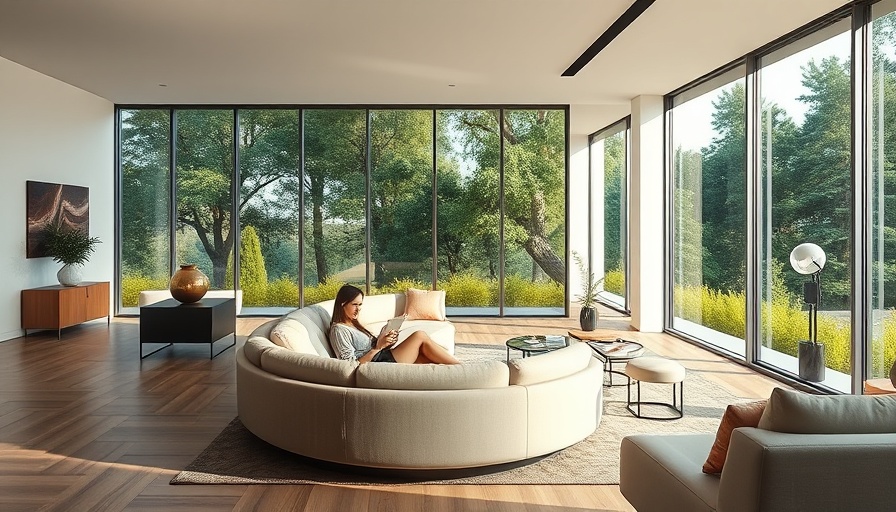
Bringing Nature Into the Home: The Maurpankhi Bungalow
In the bustling urban landscape of Gurugram, India, the Maurpankhi Bungalow stands as a testament to the harmony between nature and architecture. Designed by House & Beyond under the architectural guidance of Pushpender Arora, this unique residence is not just a home; it is an emotional sanctuary aimed at providing respite for families from the relentless pace of corporate life.
The Vision Behind a Natural Sanctuary
The inspiration for Maurpankhi arises from the desire to create a space that encapsulates warmth and calmness. Unlike many modern constructions that lean towards opulence, this bungalow champions simplicity and emotional resonance. The design integrates environmental elements seamlessly into daily living spaces, creating an atmosphere where one can reconnect with nature.
Embracing the Environment: Architectural Highlights
At the heart of the design is an ancient tree that not only marks the entrance but also celebrates nature’s character. This significant feature is enveloped by a curved zinc wall which offers both protection and a stunning focal point. The use of zinc, recognized for its durability and aesthetic appeal, signifies a commitment to sustainability as it is designed to develop a patina over time, symbolizing the evolution of the family's experiences in the home.
Design Elements that Foster Connectivity
Furthermore, the house showcases a fluid environment with interconnected spaces. The absence of rigid walls allows for a smooth transition between the living, dining, and kitchen areas, fostering a sense of unity. Such design not only promotes social interaction but also ensures that natural light floods the interiors, enhancing the overall living experience. Courtyards feature prominently, acting as open-air extensions of the living space, inviting the outdoors in and providing serene views throughout the changing seasons.
Future Trends in Nature-Inspired Design
As urbanization intensifies and homes become denser, the trend towards integrating green spaces into residential architecture is increasingly relevant. Maurpankhi Bungalow stands out as a model for future developments that aspire to bring inhabitants closer to nature. With more homeowners realizing the benefits of biophilic design—where nature is incorporated into everyday settings—there is potentially a shift towards ecological architecture that prioritizes natural materials and environmental sustainability.
Preparing for a Home Revolution
For homeowners and builders, understanding this trend is critical. There are practical insights to consider when designing a home that harmonizes with the natural environment. Incorporating elements like natural light, sustainable materials, and outdoor-indoor flow can significantly impact the well-being of the residents. As exemplified by Maurpankhi Bungalow, not only does this approach create beautiful spaces, but it also enhances the quality of life.
Common Misconceptions about Eco-Friendly Design
A common fallacy about eco-friendly home design is that it involves sacrificing modern comfort or aesthetics. In reality, homes like Maurpankhi prove that sustainability and elegance can go hand in hand. By leveraging natural beauty and innovative design, it is possible to create spaces that are not only functional and stylish but also mindful of their environmental impact.
Concluding Thoughts: A Step Towards Mindful Living
The Maurpankhi Bungalow exemplifies a commitment to mindful living that resonates in today's fast-paced world. It encourages a reconnection with nature which can significantly enhance mental well-being. Homeowners looking to improve their living spaces should take these insights to heart and consider how they can implement similar principles into their own homes.
 Add Row
Add Row  Add
Add 






Write A Comment